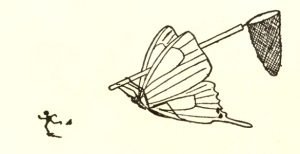
When Retraction Watch began in 2010, our co-founders Ivan Oransky and Adam Marcus quickly realized they couldn’t keep up with the hundreds of retractions that appeared each year. And the problem has only gotten worse — although we’ve added staff, the number of retractions issued each year has increased dramatically. According to our growing database, just shy of 1,000 retractions were issued last year (and that doesn’t include expressions of concern and errata). So to get new notices in front of readers more quickly, we’ve started a new feature called “Caught our Notice,” where we highlight a recent notice that stood out from the others. If you have any information about what happened, feel free to contact us at [email protected].
Title: Diabetes and Overexpression of proNGF Cause Retinal Neurodegeneration via Activation of RhoA Pathway and Diabetes-Induced Superoxide Anion and Breakdown of the Blood-Retinal Barrier: Role of the VEGF/uPAR Pathway
What caught our attention:
In a story we wrote for Science, we explored why Azza El-Remessy was paid $100,000 to leave an institution after being found guilty of misconduct. The payoff was even more puzzling after we learned she was the subject of a misconduct finding by the U.S. Office of Research Integrity, which determined she had inappropriately altered data in five images from three papers. This week, PLoS ONE retracted a study co-authored by El-Remessy — which had already been corrected in 2014 to fix figure errors, including “inadvertently” including a duplicate — in response to a recommendation by the University of Georgia’s Office of Research Compliance. The new correction (also in PLoS ONE) fixes a paper flagged by the ORI. El-Remessy’s retraction tally is now up to six.
Journal: PLoS ONE
Authors: (all combined) Azza B. El-Remessy, Telina Franklin, Nagla Ghaley, Jinling Yang, Michael W. Brands, Ruth B. Caldwell , Mohamed Ali Behzadian, Mohammed M. H. Al-Gayyar, Barbara A. Mysona, Suraporn Matragoon, Mohammed A. Abdelsaid, Mona F. El-Azab, Ahmed Y. Shanab, Yonju Ha, Sylvia B. Smith, and Kathryn E. Bollinger.
Affiliations: University of Georgia, Athens, Georgia; Augusta University (formerly Georgia Health Science University and Georgia Regents University), Augusta, Georgia; Charlie Norwood Veterans Affairs Medical Center, Augusta, Georgia, USA.
The Notices:
After the publication of the article, concerns were raised about figures in the article, as follows:
Figure 2A included a duplicate of the control micrograph shown in Figure 5A in an earlier publication (Mol Vis. 2012;18:2993–3003).
In Figure 4B, the beta-actin band is similar to the actin panel in Figure 4A in the publication in Diabetologia (Diabetologia (2013), 56: 2329–2339).
Figure 4C (proNGF) duplicates an image in Figure 5F in the publication in Diabetologia (Diabetologia (2013), 56: 2329–2339).
Two of these issues were noted in a previous Correction (http://journals.plos.org/plosone/article?id=10.1371/journal.pone.0096960). However, the University of Georgia subsequently investigated this matter in collaboration with Augusta University (formerly Georgia Regents University) and the Charlie Norwood Veterans Affairs Medical Center. The investigation committee found evidence of misconduct, and the University of Georgia’s Office of Research Compliance recommended retraction due to the instances of confirmed image duplication.
After the publication of the article, concerns were raised about Fig 4A in the article, as follows:
In panel P-GSK-3, the NG lane and the VEGF + VEGFRI lane are duplicated.In panel GSK-3, the VEGF and VEGF+VEGFRI lanes duplicate the HG-1d and HG-3d lanes.
The authors have acknowledged errors in the preparation of these panels. Following evaluation of the data provided by the authors and an investigation by the University of Georgia, we are issuing a correction to correct Fig 4. The corrected figure and raw data for the results are included in this Correction.
The authors apologize for the errors in the original figure.
Image is included in notice.
Date of retracted article: January 2013
Times cited, according to Clarivate Analytics’ Web of Science: 17 (zero for associated correction)
Date of corrected article: August 2013
Times cited, according to Clarivate Analytics’ Web of Science: 9
Date of notices: Both retraction and correction published October 16, 2017.
Like Retraction Watch? Consider making a tax-deductible contribution to support our growth. You can also follow us on Twitter, like us on Facebook, add us to your RSS reader, sign up on our homepage for an email every time there’s a new post, or subscribe to our daily digest. Click here to review our Comments Policy. For a sneak peek at what we’re working on, click here. If you have comments or feedback, you can reach us at [email protected].